How alien species get into Canada
Introduction
Every species has a natural geographic area in which it is considered part of the native flora and fauna that make up the biodiversity of the region. Some species have a very small geographic range, while others may be found over multiple provinces or even one or more continents.
“Alien” species are those species that have moved outside their natural range into an area where they would not normally be found. One of the best opportunities we have to reduce the impact of invasive alien species is to prevent them from becoming established in the first place. To do this, we need to understand how they manage to move, or be moved, outside of their native range.
Natural movement
Between approximately 12 and 80 thousand years ago, there were periods of time when much of North America was covered by ice. During these periods, plants and animals were pushed well beyond their natural range by the advancing ice and the changing climate.
When the climate warmed, and the glaciers began to recede, these same species slowly followed the glaciers north, and established new habitat. At the same time, the sheer volume of ice at the north and south poles caused a significant decrease in sea level exposing a land bridge between Alaska and Russia. It is thought that many mammal species moved from Asia to North America at this time.
While the native range of any species may change naturally with changes in climate and landform, they do so very slowly, often taking many hundreds if not thousands of years.
Unnatural or human-assisted movement
The problems we are experiencing today with invasive alien species are for the most part caused by unnatural species movement where a plant, animal insect or disease organism is moved outside its natural range into an area or ecosystem that they wouldn’t normally be able to get to on their own.
Human activity has been, and remains today, the primary means by which new species enter Canada. Throughout time, humans have both intentionally and unintentionally introduced species into new environments.

Long description for Figure 1
The graph demonstrates how over time the cumulative number of new species entering Canada has increased at what appears to be an exponential rate.
The graph above demonstrates how over time the cumulative number of new species entering Canada has increased at what appears to be an exponential rate.
For Canada’s early settlers, bringing in new species was seen as a way to survive and adapt to their new surroundings. They brought various plants and animals, including some of the agricultural crops we depend on today like corn, wheat and potatoes. Some species were also unintentionally introduced - brought in as stowaways on the ships that brought people and supplies. The number of new species introductions started to grow substantially around 1900. Since that time, increased global trade and travel has led to a dramatic increase in the number of new introductions over the past several decades.

European Buckthorn (Rhamnus cathartica L) was brought to North America as an ornamental shrub in the late 19th century. It is now a serious invader of many woodlands in north eastern United States and south eastern Canada.
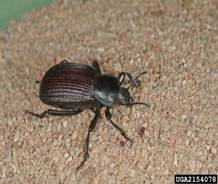
Early sailing vessels coming to North America used soil or rocks as ballast to stabilize the ship as it crossed the open ocean. This ballast was often replaced with a cargo of wood, fur or fish for the return journey to the home port. New species of insects and plants were introduced in this way.
Pathways
For invasive species, the term “Pathway” is used to describe the means by which a species travels from its natural habitat into a new one. A pathway can be either natural or man-made. Natural pathways like wind and water currents account for very few of the new species introductions. The vast majority of new species introductions are caused by humans. There are also distinct pathways for aquatic and terrestrial species.
Aquatic species pathways
Seven major pathways for the transport of aquatic invasive species have been identified.
1. Shipping
Many species have been introduced to the Great Lakes and other water bodies through shipping. Ballast water discharge and hull fouling have been responsible for such species introductions as zebra mussel, spiny water flea, and the green crab.
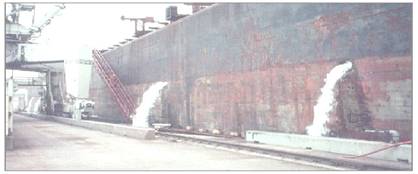
Ballast water being discharged in port
2. Recreational and commercial boating
Pleasure craft and commercial boats and barges can inadvertently help spread invasive species around Canadian waters. Many of these vessels sit idol in their home harbour for long periods of time allowing species to grow and accumulate on their undersides; if these boats are then moved to a new and uninfested port, invasive species can be introduced into those water ways. Zebra mussels area a good example of this.
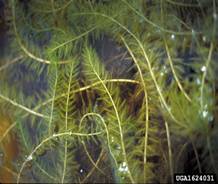
Eurasian Watermilfoil is a serious invader of fresh water ecosystems; even a small segment of this species can infest new waterways.
3. Live bait
Live bait used for fishing and released into Canada’s lakes and rivers has been responsible for the movement of several species. The rusty crayfish is one example of a species that was introduced to many water bodies through live bait release; this species, native to Ohio, Kentucky and Tennessee has spread to many northern lakes and rivers.
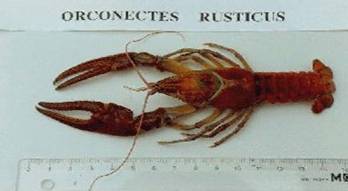
4. Aquarium and water garden trade
Aquariums and water gardens are popular hobbies for many Canadians. Unwanted fish and plants however, can be a source of invasive species introductions.
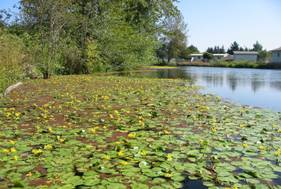
Yellow Floating Heart is an invasive aquatic plant that was originally introduced as a water garden species.
5. Live foodfish

Many species of fish are imported live for food. If released into the wild, some of these species could become invasive.
6. Unauthorized introductions
Native fish species have been purposely released into water bodies where they don’t belong. In some cases, these introductions have caused significant harm to the existing ecosystem.
7. Canals and water diversions
The construction of canals and water diversions has allowed species to move into new water bodies where they do not belong. Perhaps the best known case is the sea lamprey that moved into the upper Great Lakes once the Welland Canal was opened.
Terrestrial species pathways
Terrestrial invasive species are introduced and move around in a number of ways.
1. Cargo transport
The increase in global trade has led to an increase in cargo shipments from all over the world - many thousands of cargo containers are brought into Canada each month. These containers sometimes contain living plants and animals and insects that build new homes here in Canada; these become invasive alien species.
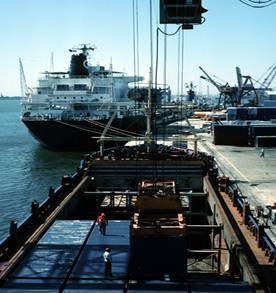
2. Horticultural planting
Many varieties of garden plants and herbs are imported into Canada. While the majority of these species do not pose a significant risk, some do, and several well known invasive species have escaped the confines of the garden to become a serious problem.
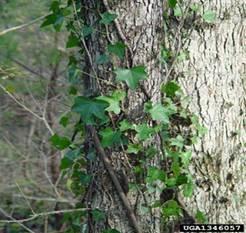
English ivy is one plant that has escaped to become a serious problem outside the confines of the garden.

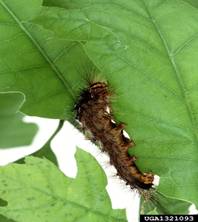
4. Fire wood movement
Although not responsible for new introductions, some invasive insect species can be introduced to new (uninfested) areas through the transport of firewood, Christmas trees, and other wood products.
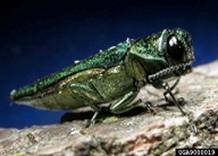
The emerald ash borer is a destructive invasive pest of ash trees. Firewood movement has contributed to its range expansion in Ontario.